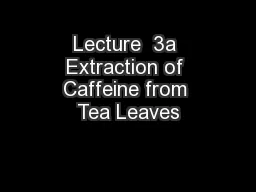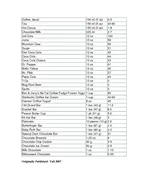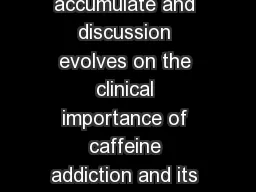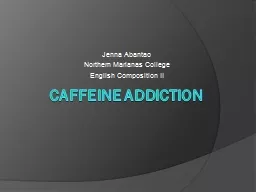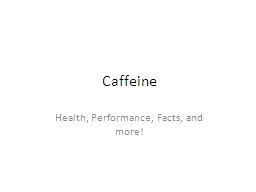PPT-Lecture 3a Extraction of Caffeine from Tea Leaves
Author : calandra-battersby | Published Date : 2019-01-26
Caffeine Background Caffeine is a naturally occurring alkaloid that belongs to a class of compounds called xanthines It is found in varying quantities in the
Presentation Embed Code
Download Presentation
Download Presentation The PPT/PDF document "Lecture 3a Extraction of Caffeine from ..." is the property of its rightful owner. Permission is granted to download and print the materials on this website for personal, non-commercial use only, and to display it on your personal computer provided you do not modify the materials and that you retain all copyright notices contained in the materials. By downloading content from our website, you accept the terms of this agreement.
Lecture 3a Extraction of Caffeine from Tea Leaves: Transcript
Download Rules Of Document
"Lecture 3a Extraction of Caffeine from Tea Leaves"The content belongs to its owner. You may download and print it for personal use, without modification, and keep all copyright notices. By downloading, you agree to these terms.
Related Documents

